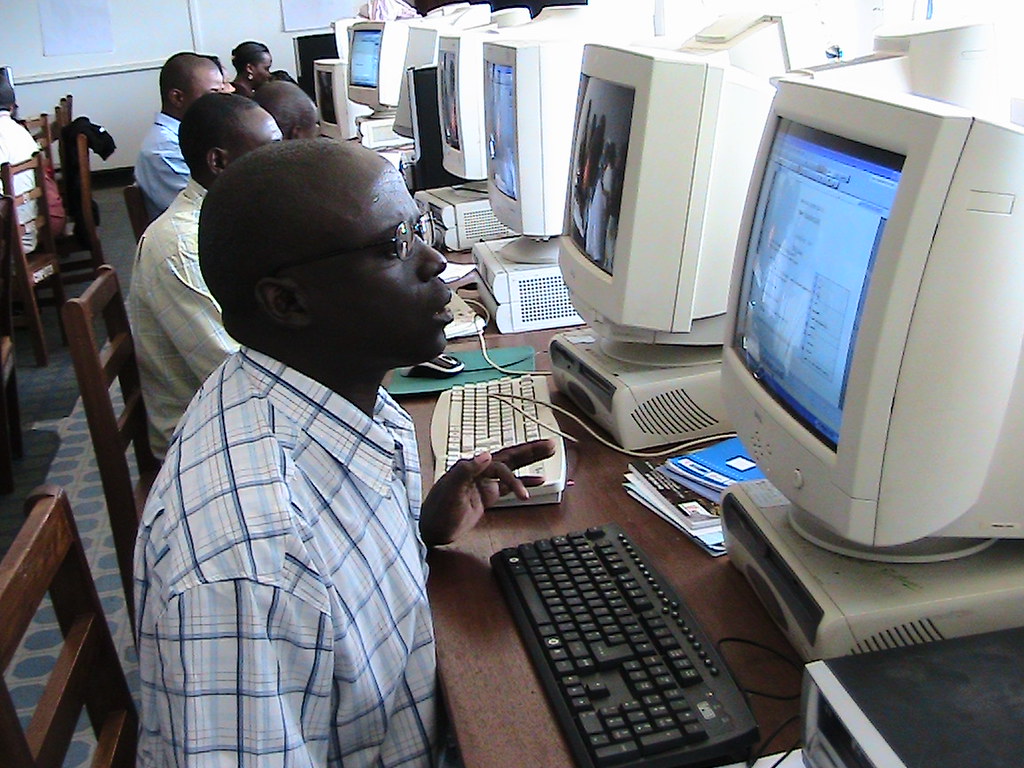Reducing Poverty Through Technological Development
 In a world increasingly reliant on science and technology, lack of access is a significant concern for those living in poverty. To help develop those regions suffering from lack of development, there needs to be a greater push for education in these fields, as well as greater access to technology itself.
In a world increasingly reliant on science and technology, lack of access is a significant concern for those living in poverty. To help develop those regions suffering from lack of development, there needs to be a greater push for education in these fields, as well as greater access to technology itself.
This is where the UN Technology Bank comes in, a global organization that is “dedicated to enhancing the contribution of science, technology and innovation for sustainable development in the world’s least developed countries.” In essence, this branch of the UN works to eradicate global poverty and inequality through technological development.
Between 1820 and 2002, the level of global inequality rose to 85%, mainly due to technological growth in certain countries. Despite the necessity of modern technology for modern economies to thrive, many developing countries need to catch up in its adoption, with a 2016 Pew survey finding only 54% of the population in 29 emerging countries could access the internet while only 37% owned a smartphone. However, now is the perfect time for developing countries to not only catch up on technological development but also get ahead on emerging sectors such as green technology, a potentially $9.5 trillion industry. Thankfully, the UN Technology Bank is here to help them achieve their goals.
The First Few Years
Headquartered in Gebze, Turkey, the organization was officially launched in 2018. However, its roots go back several years earlier. In 2011, the UN adopted the Istanbul Programme of Action for Least Developed Countries, which explicitly called for an organization to facilitate technological development in impoverished nations.
The UN laid the foundations for the organization after its leaders recognized that science and technology play a paramount role in lifting least developed countries out of poverty. In doing research for the Istanbul Programme, it found that LDCs needed “forward-looking science, technology and innovation policy frameworks to upgrade and align the skills base with market requirements,” which are vital in spurring economic development in these nations where around 30% of working people on average live below the poverty line.
The Tech Bank also aims to further the UN Sustainable Development Agenda for 2030. This set of 17 goals, adopted in 2015, serves as a blueprint for global development. Among its major aims is eliminating poverty and hunger.
During its first three years, the Tech Bank focused on building partnerships at the national and international level. In addition, it also examined the current state of science and technology in least-developed countries to determine how to establish innovation networks and begin technology transfer.
In a 2018 interview, Technology Bank Council Member Bitrina Diyamett explained why the UN is trying to help LDCs. “The bank starts from the premise that these countries are poor – to a large extent – because they lack capabilities in science, technology and innovation. Therefore, based on the UN principle of “leaving no one behind” in sustainable development, there is no other alternative to achieving the Agenda but by building such capabilities.”
The Work
Since its founding, the Technology Bank has worked on several projects and activities in least-developed countries around the globe.
With this work, it hopes to help these countries achieve several important sustainable development goals. Chief among these goals is economic self-reliance. As least-developed nations acquire new technology and the skills necessary to support it, they will then have the ability to grow their market considerably and lift people out of poverty. Other important goals include sustainable access to health technologies, sustainable industrialization, education and academic cooperation.
Once the Technology Bank decides which country to work with, it takes a four-step approach to help them achieve their goals. The first and arguably most crucial step is beginning the Technology Needs Assessment. Here, Tech Bank researchers identify essential technological development needs, understand the key challenges to that development and create an action plan to achieve greater technical capacity.
At the same time, it begins working on technology transfers. As the name implies, workers and researchers try to facilitate the transfer of essential technology to the countries in which they operate. An example of this may be the building of eco-friendly and affordable shelters or the creation of technology labs to educate young people with the skills necessary to build, operate and maintain using modern science and technology.
Finally, the Tech Bank works on the country’s policy and capacity development and forming strategic partnerships and advocacy. In this final step, the focus is on creating and advocating for national policies that support the capacity for science and technology while forming strategic partnerships with other nations and organizations.
Current Results and Future Outlook
The UN Tech Bank has assisted development in 11 different countries with ongoing projects in four more, including Bangladesh and Benin. Its ultimate goal is to utilize science and technology to help develop the 46 least developed nations.
In March 2022, Tech Bank leader Taffere Tesfachew called on all countries to help those living in the least developed ones. While thanking Turkey for its continued support for the Tech Bank, he stated he was “Hoping other countries would join, like China, also advanced countries like Germany.” And though only the future can tell how successful the Tech Bank will be, thus far, its efforts have proved fruitful, and if other countries answer the call, it is sure to achieve its mission of lifting the most vulnerable out of poverty.
– Jonathon Crecelius
Photo: Flickr
